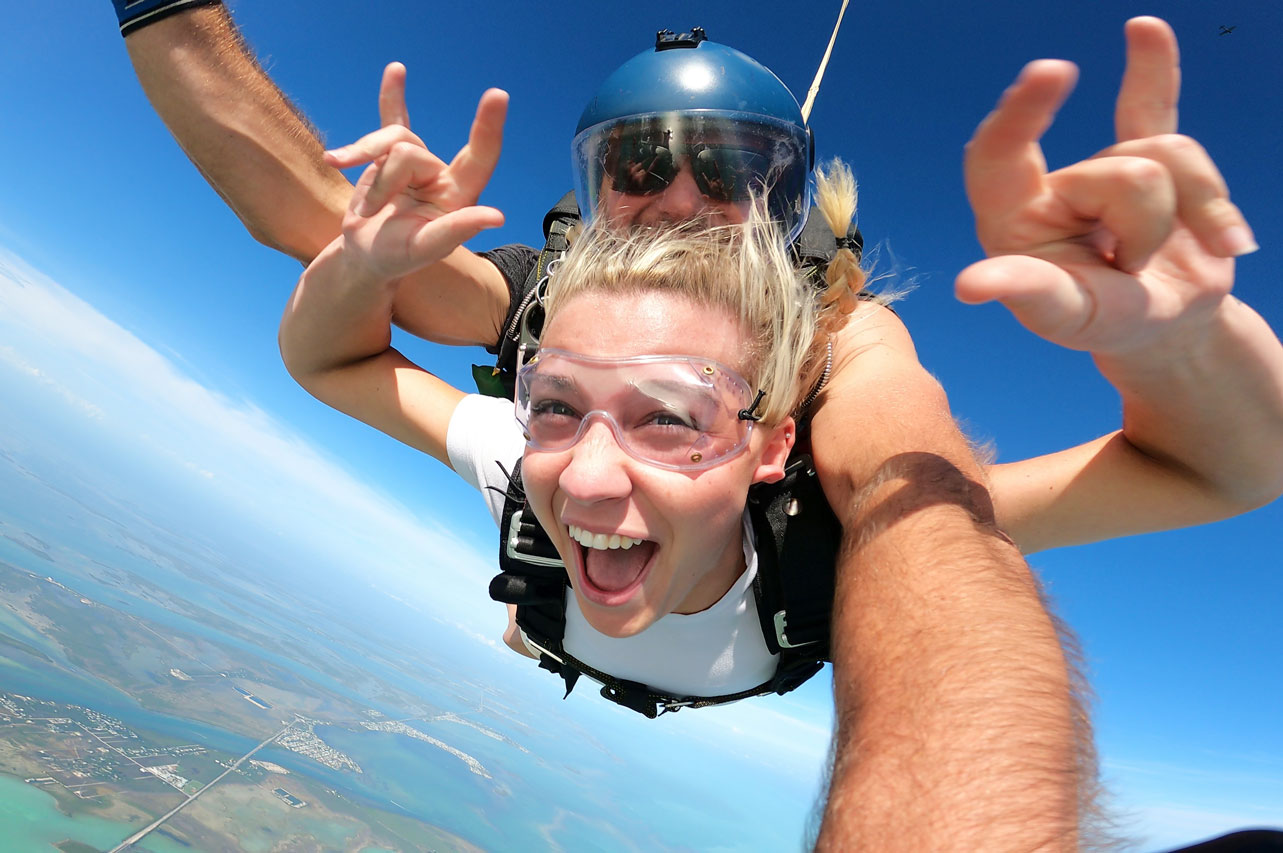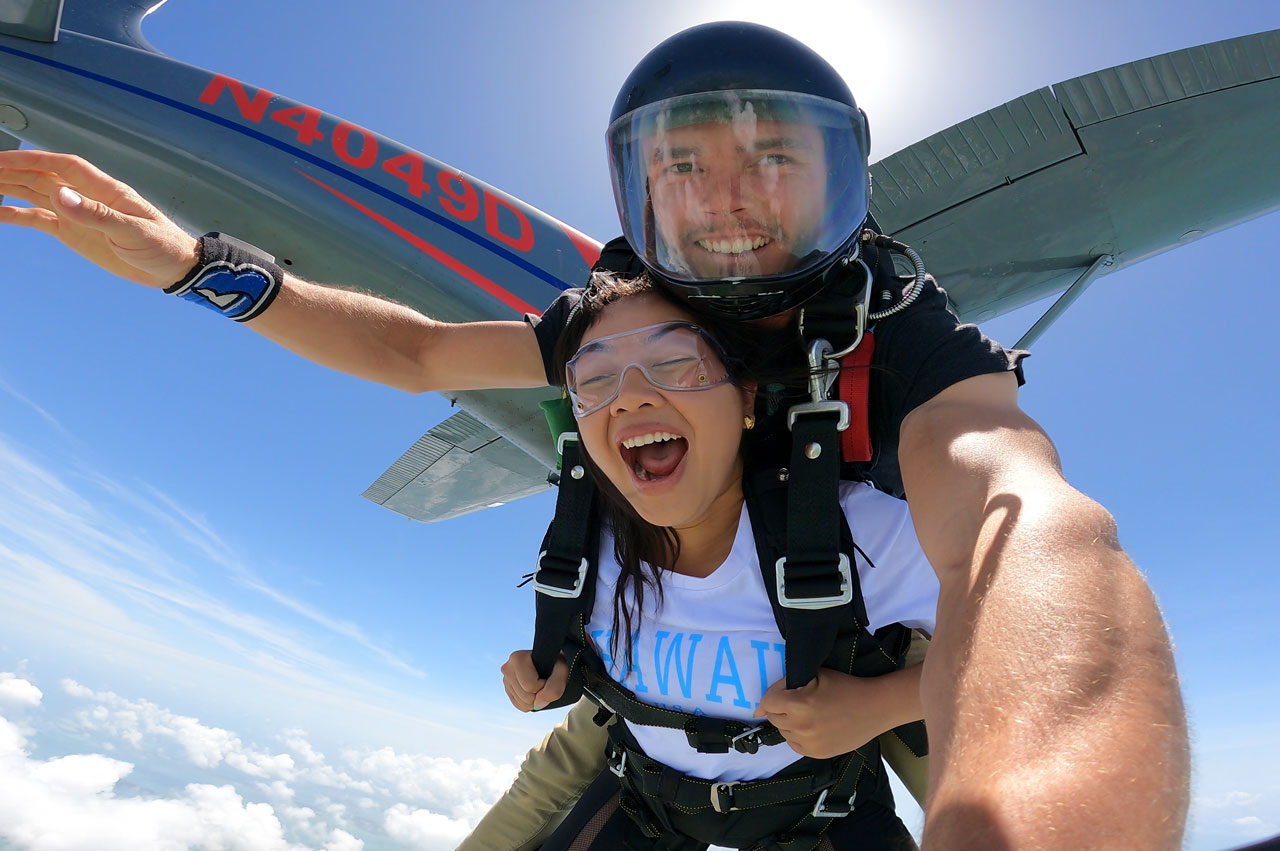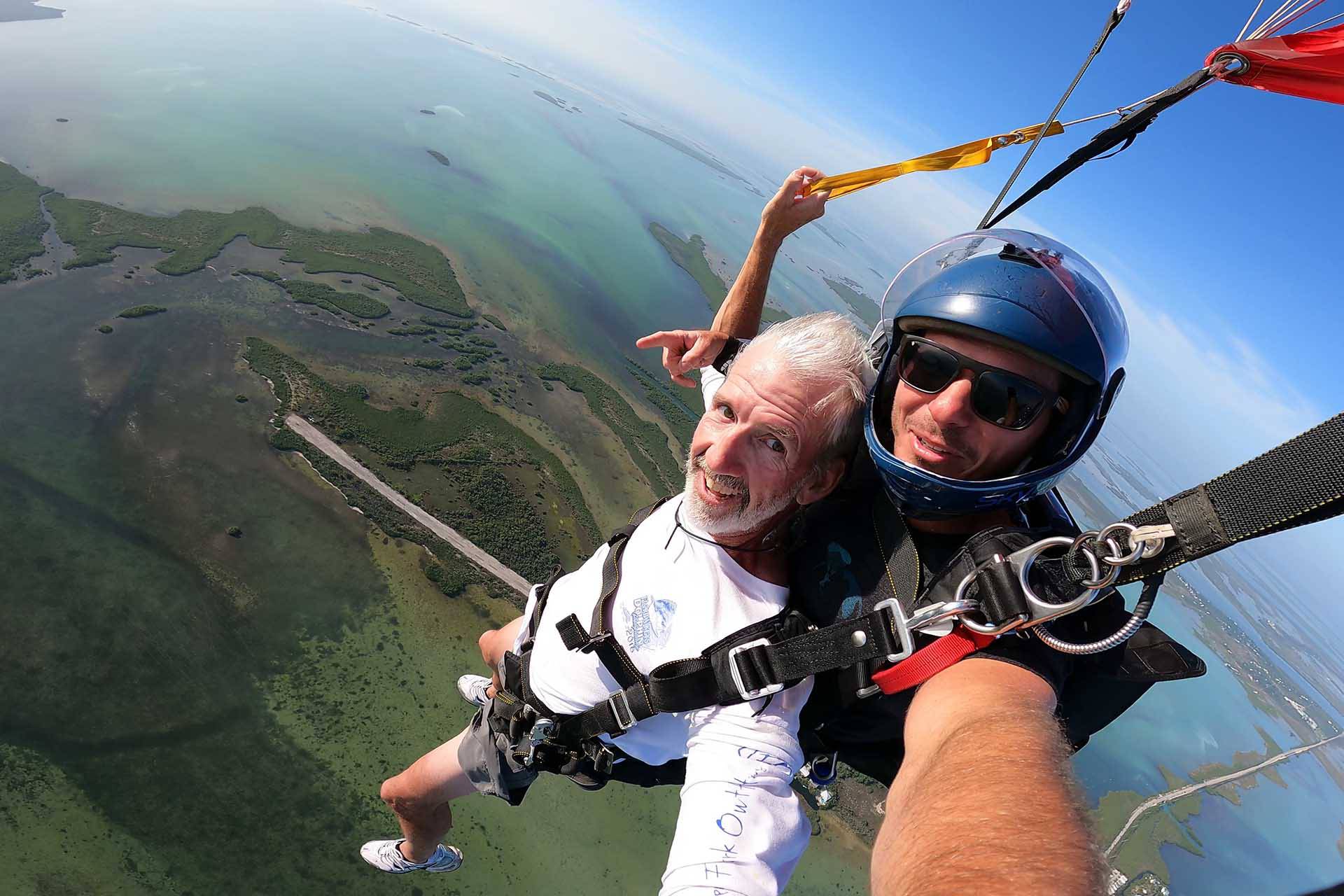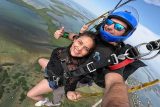Skydiving With Back Or Knee Pain
Skydiving
Posted by: Skydive Key West
1 year ago
Skydiving is so much more than a carnival ride. You’re an active participant in every skydive you make, even a tandem skydive. For this reason, there are certain physical fitness requirements to jumping out of an airplane. After all, there are a lot of different body positions involved in making a skydive, so it’s important to know if you can participate safely and comfortably despite a bad back or knees.

Questions About Skydiving With A Bad Back & Knees
There are a number of questions that frequently come up about the physicality of skydiving as it relates to a bad back or bad knees, including:
Is skydiving painful?
Not if you do it right! While skydiving does put stress on the body, a lot of research has gone into making skydiving as safe and as comfortable as possible. But if you have chronic pain or injuries, that answer can be a little more nuanced.
Can you skydive with a bad back?
The answer to this question is more complicated than a simple yes or no. At the end of the day, you want to consult a medical professional to decide if skydiving is safe for your individual body.
Can you skydive with a herniated disc?
The more severe a back or neck (or knee) issue is, the more uncomfortable the positions involved in skydiving will be. It also increases the chance for further damage to those body parts.
Is skydiving bad for your back?
Or maybe the pertinent question for you is: Is skydiving bad for your knees? Again, not a straight answer here. But, having a better understanding of how each phase of the skydiving puts stress on your body can help you answer this question for yourself.
Read on to find out the truth about riding in the airplane, skydiving freefall, parachute deployment, and the skydiving landing.

The Ride Up
Even sitting in the airplane can be difficult for someone who experiences back pain. Skydiving airplanes are much smaller than typical commuter jets. The biggest skydiving airplane isn’t much bigger than what is often referred to as a “puddle jumper,” so you can imagine that the space can get pretty cramped.
Additionally, the seats are removed from skydiving airplanes because they get in the way of movement and exit. Boarding and riding in a jump plane is different from the boarding process and riding experience of air travel. Depending on the plane, you may be sitting on a bench between your instructor and the person in front of you, or you may even be sitting on the floor.
There’s a good chance you’ll have to crouch or crawl, so it’s important to take your back or knees into consideration when moving around in the airplane. If you’re worried that the process of boarding, riding in, or exiting the plane will hurt your back or knees, don’t be afraid to tell your instructor. You can work together to come up with a plan that will have the least impact on your painful areas.
We want you to be as comfortable as possible so you can enjoy every part of your skydive!

Freefall Position & Your Spine
Freefall isn’t often considered when people think about back pain and skydiving, but the position you’re in during freefall actually requires some spine flexibility.
Skydivers utilize an arch position in freefall to maintain stability. Arching basically means that you will look like a banana in freefall, with your hips being the lowest point. This can put some stress on the lower back.
If you’re wondering whether or not your back can handle an arch position, you can actually try it at home before you even get to the dropzone. Stand with your feet hip width apart and push your hips as far forward as they will go. Now lean back so that you’re looking at the ceiling. Feel okay? Now try it horizontally by laying on your belly and lifting your thighs and shoulders off the ground.
If your back can handle these sample arches, you’re probably good to go for in-air application.
Parachute Opening
The first time that jumpers are subjected to increased force during a skydive is during the parachute opening. Even though parachutes are designed to open softly, there is an element of pressure that comes with the process. Slowing down from 120 mph to 20 mph is going to cause some compression, no ifs, ands, or buts (or backs) about it.
Normally, the jerk of the parachute opening is minimal and feels like just enough to let you know that everything is working the way it’s supposed to. But sometimes, even that amount of pressure can be too much if you’re someone who experiences back pain.
There are also times when the parachute might open a little quicker than expected. This could be even more painful for someone who already has back issues.
Most of the time, the parachute opening shouldn’t pose too much of an issue when it comes to back pain. But knowing your back and body can help you decide just how much pressure you can handle.

Landing
The main part of the skydive people worry about is the landing. It makes sense. That’s the part where you meet the ground!
In days of yore, parachutes used to come straight down and the touchdown could be pretty rough. Today’s parachutes, though, have a lot more forward movement. This means that most of the impact is dispersed over a longer touchdown.
In preparation for landing, the tandem student must lift their legs to be just about parallel to the ground. This lets the tandem instructor navigate the landing without the student’s legs in the mix.
A tandem pair usually slides across the ground in a seated position when they come in for landing. And the instructor is able to slow the parachute considerably by flaring it just like an airplane wing.
This means that landings are generally more forgiving on the ol’ back and knees. Of course, it’s important to plan for every possibility. There are cases where the landing could be a little bit harder than planned, so it’s a good idea to think about exactly what your body can handle.
Having a good understanding of the condition of your back and knees and what’s causing your back pain or knee pain will help you decide if the possible risks associated with landing a parachute are safe for your particular body.
Other Medical Conditions to Consider
Now that you know it’s not impossible to skydive with back pain, what medical conditions stop you from skydiving? Surprisingly, the most common ailments that prohibit someone from making a jump don’t have anything to do with bones or joints.
Heart related conditions, such as hypertension, irregular heartbeat, and cardiovascular disease, are among the top reasons to not skydive. The adrenaline involved in jumping from an airplane can put stress on the heart, and a pre-existing heart issue can make that an unsafe situation.
It’s a good idea to talk to your doctor if you have any health-related issues before deciding to take the leap. Having a good understanding of your limits can make it easier for you to enjoy your skydive, and for your instructor to support or accommodate you if it’s safe to do so.
We’ve got your back! Let us take you on a skydive today!




